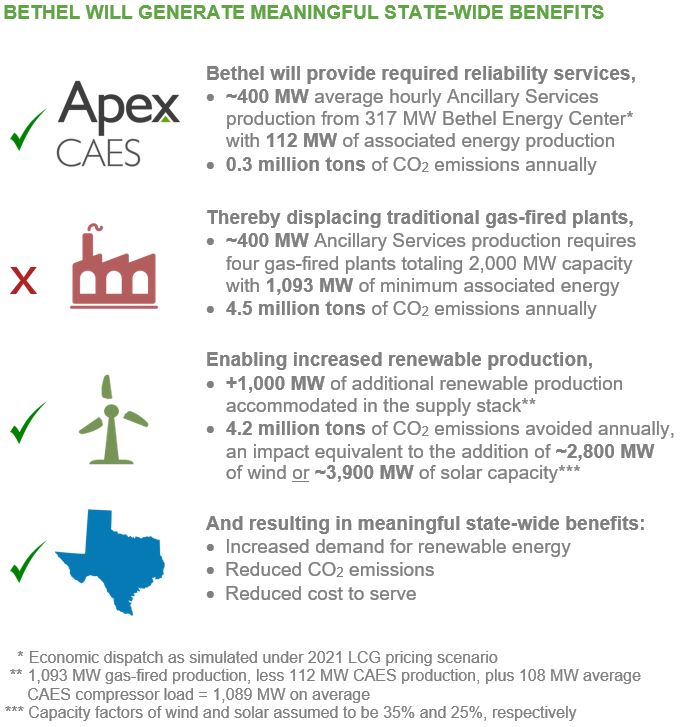Renewable Integration
Our environmental stewardship extends beyond the low environmental impact of our plants. The storage function and quick-response generation capabilities of CAES will encourage the growth of renewable power generation and thereby make possible large reductions in CO2 emissions.
Renewables and storage go hand in hand:
Wind and solar facilities provide power with no emissions and no fuel costs. However, unlike traditional power generation resources, renewable power production is dependent on weather, which can be out of sync with customer demand. If renewable energy supply exceeds the demand for renewables it must be stored for later use or forever lost (curtailed). Demand for renewables is equal to total demand less electricity produced by i) generating units that lack the flexibility to turn off and restart in a short amount of time (e.g., nuclear plants) but are needed during peak hours, and ii) flexible assets that must stay online to provide grid reliability services. As shown in the example below, the Bethel Energy Center will act in two ways to alleviate curtailment of renewable production: i) Bethel will provide greater amounts of reliability services with less associated energy production than conventional generators and ii) Bethel’s compressor will add demand to the grid while charging. With less risk of curtailment, investment in renewable generation should continue to grow.
The result is a cleaner, more efficient grid.
“Energy storage allows us to use other resources, including existing generators, new natural gas plants, and renewable technologies, more efficiently.”
– Electricity Storage Association.

CAES supports the efficient integration of renewable resources:
- In some regions, wind generates a disproportionate amount of its power during the middle of the night, when demand is lowest. The diurnal nature of renewables can create imbalances between supply and demand and put strains on the grid during periods of transition between low and high demand hours.
- CAES can utilize excess electricity created during the night to charge its storage cavern, then redeploy that energy to the grid during periods of high demand; this time shifting of energy can help to smooth steep transitions from renewable to non-renewable electrical generation. By improving grid accommodation of renewables, CAES promotes a cleaner, more economically efficient grid.
- By providing demand for renewable energy during offpeak hours, CAES reduces the potential for renewable energy curtailment and promotes growth in renewable production.
For further information, visit our references page.

